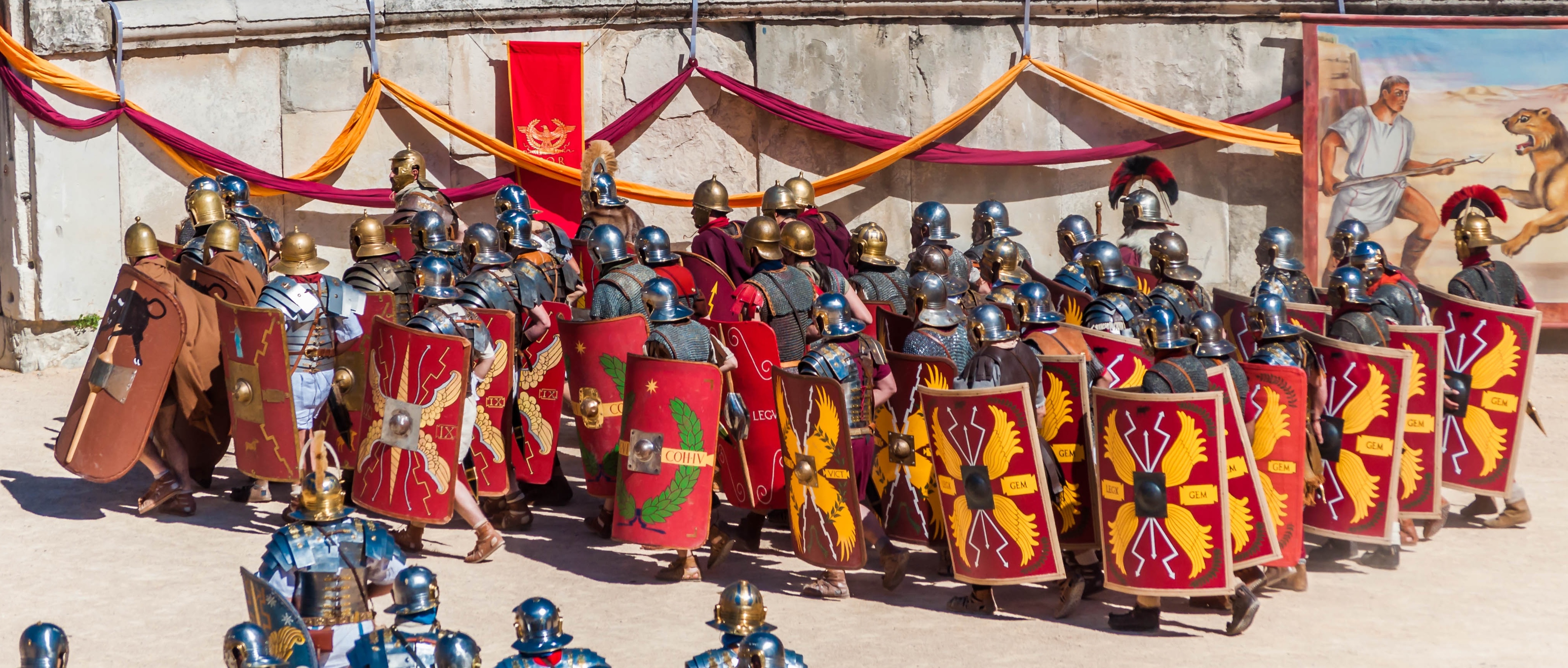
No, I’m not talking about losses in battle. Disease all the time, famine in bad times, and not quite enough food in normal times were deadly in the ancient world. Not even until the American Civil War was germ theory of disease transmission a known thing. (Update: slight wording changes not identified as such.)
The death rate in ancient times was terrible.
In The Roman Army – The Greatest War Machine in the Ancient World, Chris McNab provides some estimates of the rate of losses in a Roman Legion (page 152).
Standard term of enlistment was 25 years. Other writers report that upon retirement, a legionnaire would be given a huge bonus in the range of 3,000 denarii, which would have been equal to something in the range of 13 years pay. Of course to collect, the soldier would still have to be alive.
Mr. McNab estimates 40% of the ranks of a legion would die before the end of a 25 year enlistment.
He also estimates 15% of the rank would have fallen sufficiently ill or injured to be invalided out of service.
So, smoothing things out to an average, that means in a legion of 5,000 soldiers around 80 would die each year due to disease. Another 30 per year would be invalided out for non-fatal illness or injury.
That equals an expected loss of around 110 per year.
That means in two centuries, or companies, of soldiers (about 200 legionnaires) around 3 would die each year and 1 would be disabled. That is in addition to what might actually happen in combat.
Additional recruiting needs would be for those legionnaires who actually make it to retirement.
If 2,750 of 5,000 soldiers were lost by the end of a 25 year enlistment, that leaves 2,250 who reach retirement. Spread over time, that would be another 90 per year that retire and thus need to be replaced.
So that puts the recruiting needs at about 200 new soldiers per 5,000 man legion each and every year.
Here is my math, so you can review and revise as you wish:
| cumulative | years | per year | |
| death rate | 40% | 25 | 1.6% |
| invalid rate | 15% | 25 | 0.6% |
| total lost | 55% | ||
| average retirement | 25 | 4.0% |
| legion | attrition | lost | annual | |
| death losses | 5,000 | 40% | 2,000 | 80 |
| invalid losses | 5,000 | 15% | 750 | 30 |
| total | 2,750 | 110 | ||
| soldier who retire | 2,250 | 4% | 90 | |
| annual recruiting | 200 | |||
Complicating the recruiting issue is that in time of crisis, many new legions would be raised. With all those soldiers enlisting about the same time, those surviving long enough to complete their enlistment would all retire at about the same time.
This created the situation that every once in a while, like 25 years after a crisis, a large portion of many legions would have to be replaced all at the same time.
That of course created an echo 25 years later when a majority of soldiers in those replacement Legions retired. I can picture that after a century of crises, there would be three or four waves of heavy recruiting.
2 thoughts on “Attrition rate in Roman Legions.”
The Romans had a pretty robust medical field for there time though. The Roman legion Dr’s were skilled. I think more survived illnesses than you give credit for.
Hello I S:
Excellent point. The level of medical care in the Roman Army was wonderful for the time. Multiple authors I’ve read have made that point. A well-read friend of mine pointed out that the level of medical knowledge and care fell sharply after the fall of the Roman Empire. Medical knowledge and skill did not return to the level it was under the Romans until well into the Middle Ages, according to my friend. He pointed out (news to me) the Romans had forward-based field hospitals with doctors equipped with decent medical instruments providing care to wounded soldiers shortly after a battle. That tidbit impesses me, especially considering that would have been around 2,000 years ago.
One author I read (don’t recall which) said that even with harsh discipline, frequent food scarcity, and occasional battles, a young man’s life expectancy, income level, and overall quality of life would usually be far higher in the army than staying on the farm. My guess is that without that high level of medical care army life would have been far deadlier than life on the farm.
Any links to websites that dive into the medical care provided an ancient times? That isn’t the focus of this blog.
Thanks for taking the time to read and the time to comment.
Jim